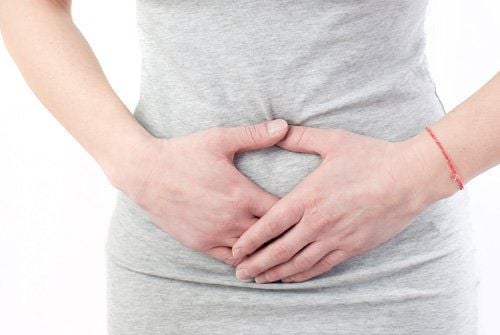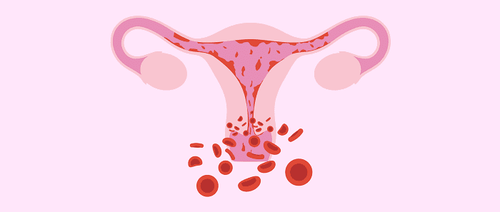This is an automatically translated article.
The article was professionally consulted by Specialist Doctor I Pham Thi Yen - Department of Obstetrics and Gynecology - Vinmec Hai Phong International General Hospital.Endometriosis is a disease not unfamiliar to women. In addition to causing severe abdominal pain, the disease also has potential dangerous complications including the risk of infertility.
1. What is endometritis?
Inside the uterus is a soft, spongy lining, called the endometrium. This area is ready to receive fertilized eggs and nurture them to develop into fetuses. If an egg is not released, the endometrial tissue is destroyed and expelled, forming the menstrual cycle.Endometritis is an inflammatory condition in the uterine cavity, often occurring due to a number of interventions in the uterine cavity that are not sterile such as abortion, curettage, biopsy, ring placement, and ring removal. The disease can also occur after birth, after cesarean section if there is retained placenta or prolonged stasis of uterine fluid...
Endometritis, if not treated properly, can cause dangerous complications such as infection. bacteremia, uterine adhesions, inflammation of the appendages causing adhesions to the fallopian tubes and eventual infertility due to the sperm not meeting the egg for fertilization, the fertilized egg not being able to implant in the uterus, the uterus is not secure. function for egg nesting.

2. What causes endometritis?
The cause of endometritis is usually bacteria (staphylococcus, streptococcus, gonorrhea, Chlamydia, tuberculosis...) or by bacteria spreading from the bottom up during or after cervicitis, yinitis. religion. However, the most common causes are infection after miscarriage, retained placenta, fluid retention, cesarean section (non-sterile surgical instruments), premature rupture of membranes, and prolonged labor. vaginal tracing, IUD insertion, unsafe abortion)...3. Symptoms of endometritis
Common symptoms of the disease are severe abdominal pain before and during menstruation, pain during sex. Patients often feel fatigue, pain in the urinary tract, diarrhea, constipation, vomiting... In many cases, these symptoms are also accompanied by allergies, frequent infections in the private area. When having endometritis, the patient feels pain in the lower abdomen, a lot of discharge with pus, and a fever. If treatment is not correct or untreated, the disease turns to a chronic stage, whose main manifestations are usually lower abdominal pain, uterine bleeding, menstrual disorders.
4. Why do women need endometrial ablation?
Endometrial ablation is a procedure that destroys a thin layer of the lining of the uterus. In most cases, women who experience heavy bleeding or bleeding that won't stop during their periods will be treated with medication first. If heavy bleeding cannot be controlled with medication, endometrial ablation may be used. This procedure can help reduce the amount of menstrual flow to normal or lighter. If excision still fails to control the condition, your doctor will order further treatment or do surgery.Who should not have endometrial ablation: Endometrial ablation is not recommended in postmenopausal women and women with the following problems:
Disorders of the uterus or endometrium Endometrial hyperplasia Uterine cancer Newly pregnant Recently or currently having a uterine infection
5. Is it possible to get pregnant after endometrial ablation?
After endometrial ablation, the chances of getting pregnant are very low, but it is still possible to get pregnant. If you become pregnant after an endometrial ablation, your risk of miscarriage and other health problems is greatly increased. If you still want to get pregnant, you shouldn't have this procedure. Women who have had an endometrial ablation should use birth control until after menopause, and sterilization may also be a good option.A woman who has had an endometrial ablation still has full reproductive organs, so regular cervical cancer screening and gynecological examination are still essential.

6. Techniques to perform endometrial ablation?
The following methods are the most commonly used to perform endometrial ablation:Radiofrequency : A probe is inserted into the uterus through the cervix. The tip of the transducer emits radio wave energy in the form of a grid into the endothelium. The energy and heat destroy the endometrial cells, which are then sucked out by the machine.
Coagulation : A small probe is inserted into the uterus. The tip of the probe will coagulate the endometrium. This technique is usually performed under ultrasound guidance.
Hot fluids: The fluids are introduced into the uterus through a hysteroscope (a small device that transmits light to view the endometrium), then the fluid is heated and held in the uterus. supply for about 10 minutes. High temperatures destroy the endothelium.
Hot water balloon : a balloon is placed inside the uterus during hysteroscopy. Inject hot liquid into the balloon to expand until the edges of the balloon press against the endometrium. High temperatures destroy the endometrium.
Microwave energy : A special transducer is inserted into the uterus through the cervix and then transmits microwave energy to the endometrium and destroys it.
Electrical dissection: performed with a resectoscope. A laparoscope is a small endoscopic instrument that is inserted into the uterus. The tip of the laparoscope can be a metal ring, a roller, or a spike ball, which is charged to destroy the endometrium. This procedure is usually performed in the operating room and requires general anesthesia. However, it is not as popular as other methods.
7. What symptoms you may experience after surgery
Some common side effects after endometrial ablation:Abdominal pain similar to menstrual cramps for 1-2 days Thin vaginal discharge with blood, which can last a few weeks. Discharge may be heavy in the first 2-3 days after surgery Urinating more often within the first 24 hours Nausea Endometrial ablation has certain risks such as: Low risk of infection and bleeding . Instruments used in the procedure can cause perforation of the uterus or intestines. Some methods carry the risk of burning the vagina, vulva, and intestines. In rare cases, the fluids used to stretch the uterus during electrosurgery can be absorbed into the bloodstream causing serious complications. Therefore, the amount of fluid used is always carefully checked during the procedure.
Please dial HOTLINE for more information or register for an appointment HERE. Download MyVinmec app to make appointments faster and to manage your bookings easily.
Reference source: Aacog.org













